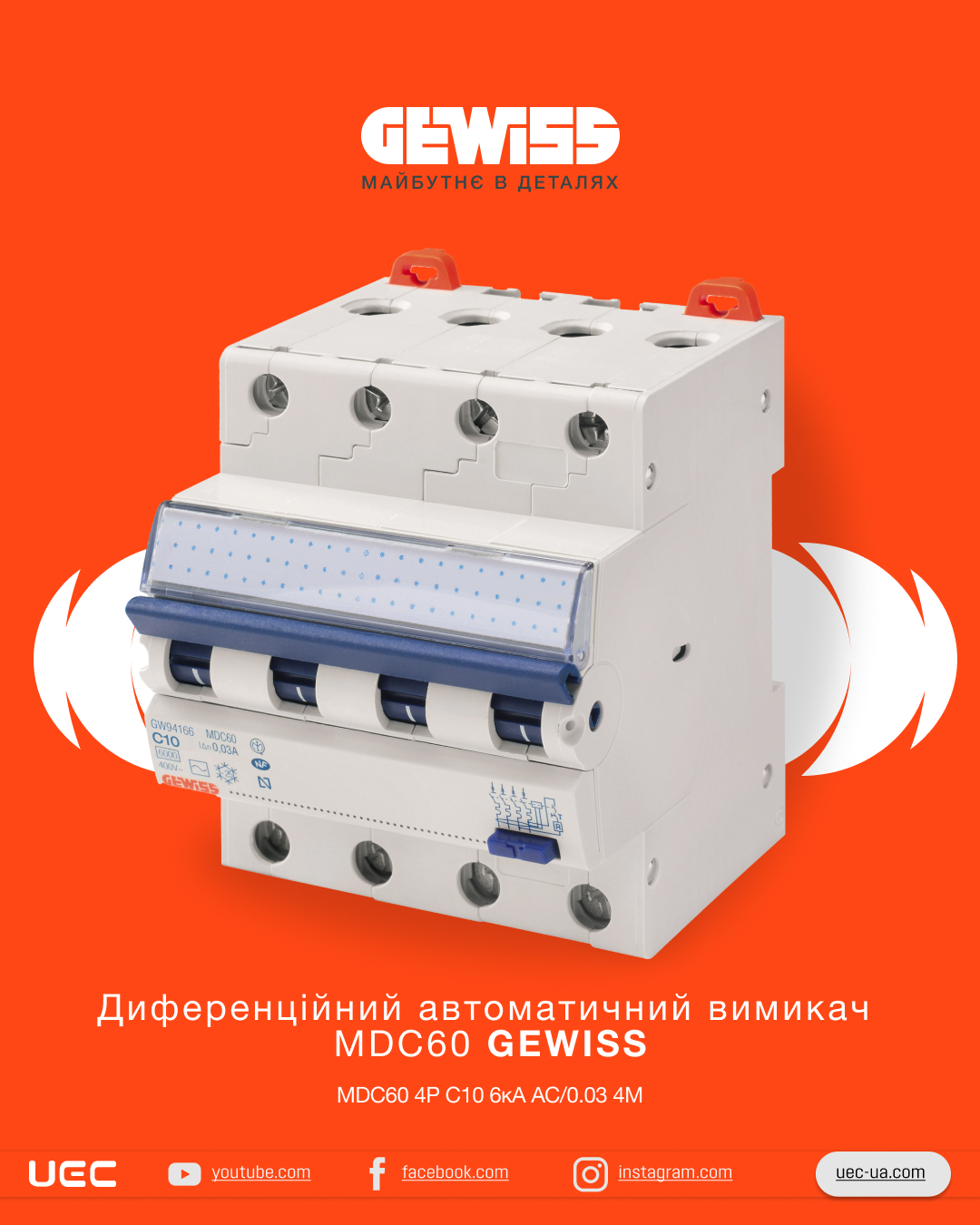Safe power supply in residential and commercial buildings is essential in modern life. As the number of electrical appliances grows, so does the load on the network, along with the risks of short circuits, current leakage, or electric shock. That’s why differential protection devices are a crucial part of today’s electrical installations. One of the most convenient and effective options is the RCBO. Let’s take a closer look at what it is, how it works, and how to install it properly.
What Is an RCBO in Simple Terms?
An RCBO (Residual Current Circuit Breaker with Overcurrent Protection) is a combined device that integrates two functions:
Residual current protection (like an RCD);
Overload and short circuit protection (like a circuit breaker).
In simple terms, it monitors to ensure:
No current leaks due to faulty insulation or accidental contact with wires;
The network load doesn’t exceed safe limits;
Short circuits are interrupted immediately.
RCBOs combine RCD and circuit breaker functionality into one compact unit, saving space and simplifying installation.
Difference between an RCD and an RCBO:
| Parameter | RCD | RCBO |
|---|---|---|
| Leakage protection | Yes | Yes |
| Overload & short-circuit protection | No | Yes |
| Needs a separate breaker | Yes | No |
| Purpose | Detect current leakage | Full circuit protection |
How an RCBO Works
An RCBO continuously compares the incoming and outgoing current. If there’s any imbalance (e.g. some current leaks to ground through damaged insulation or human contact), it instantly disconnects the power. It also trips when the current exceeds the rated limit or a short circuit occurs.
Types of RCBOs:
Electromechanical: Reliable, work even without voltage in the network, suitable for all installations.
Electronic: Depend on network voltage to operate; more affordable, but less robust.
Where to Use RCBOs
RCBOs are particularly useful in:
Wet rooms (bathrooms, kitchens);
Power outlets and lighting circuits;
Children's rooms;
Private homes to protect appliances with metal cases.
UEC offers a wide range of RCBOs suitable for both household and professional use.
How to Connect an RCBO: Step-by-Step
Preparation:
Disconnect the power to avoid electric shock;
Use a tester or multimeter to verify no voltage is present;
Review the device datasheet: it includes the rating, connection type, and wiring diagram.
Choose the mounting location: Install the RCBO on a DIN rail inside the panel, after the main circuit breaker or meter, and before the loads (outlets, lights).
Wiring the RCBO:
Connect the line (L) and neutral (N) conductors from the power source to the top terminals;
Connect the load (outlets, lights) to the bottom terminals;
If available, connect the ground terminal to the grounding system.
Important: Never mix the supply and load neutrals—this is a common mistake that can cause false tripping.
Beginner Tips
Use standard wire colors: brown/black for live, blue for neutral, yellow-green for ground;
Secure wires tightly in the terminals to avoid overheating;
Don’t cross wires or let them touch inside the panel.
Common Connection Errors
Reversing line and neutral wires, disrupting device logic;
Grouping neutral wires before or after the RCBO, causing leakage currents;
Installing an RCBO without checking the total load, which may lead to false tripping.
When to Call a Professional
If you lack experience with electrical systems, it’s best to hire a certified electrician. Incorrect installation may damage the RCBO or create a risk of shock or fire.
UEC offers RCBOs with clear connection instructions and compliance with safety standards — ideal for beginners and professionals alike.
Advantages of UEC RCBOs:
High-precision tripping;
Full protection against faults (leakage, overload, short circuit);
Compliance with European quality standards;
Easy installation into standard electrical panels;
Available in 6A, 10A, 16A, 25A, 40A with 10, 30, or 100 mA sensitivity.
Why Choose an RCBO?
An RCBO is the best solution for those who want complete protection in one device. It combines circuit breaker and RCD functions, saves space, and boosts safety. Choose the right model based on your needs, and follow connection instructions to avoid common pitfalls.
Explore UEC’s full range of RCBOs at uec-ua.com.



